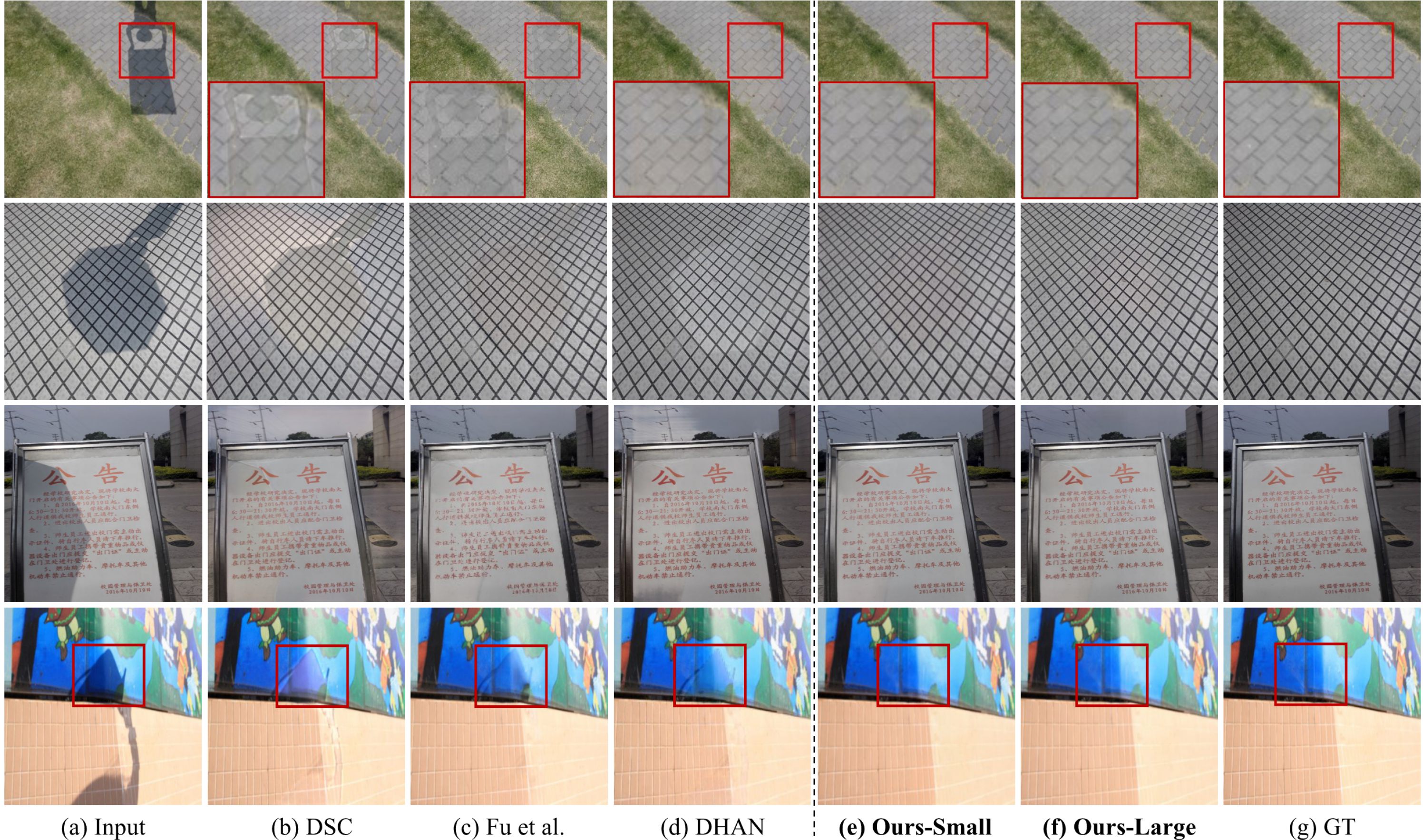This is the official implementation of the AAAI 2023 paper ShadowFormer: Global Context Helps Image Shadow Removal.
- Feb 24, 2023: Release the pretrained models for ISTD and ISTD+.
- Feb 18, 2023: Release the training and testing codes.
- Feb 17, 2023: Add the testing results and the description of our work.
To tackle image shadow removal problem, we propose a novel transformer-based method, dubbed ShadowFormer, for exploiting non-shadow regions to help shadow region restoration. A multi-scale channel attention framework is employed to hierarchically capture the global information. Based on that, we propose a Shadow-Interaction Module (SIM) with Shadow-Interaction Attention (SIA) in the bottleneck stage to effectively model the context correlation between shadow and non-shadow regions. For more details, please refer to our original paper
- Python 3.7
- Pytorch 1.7
- CUDA 11.1
pip install -r requirements.txt- ISTD [link]
- ISTD+ [link]
- SRD [Training][Testing]
Please download the corresponding pretrained model and modify the weights in test.py.
You can directly test the performance of the pre-trained model as follows
- Modify the paths to dataset and pre-trained model. You need to modify the following path in the
test.py
input_dir # shadow image input path -- Line 27
weights # pretrained model path -- Line 31- Test the model
python test.py --save_imagesYou can check the output in ./results.
- Download datasets and set the following structure
|-- ISTD_Dataset
|-- train
|-- train_A # shadow image
|-- train_B # shadow mask
|-- train_C # shadow-free GT
|-- test
|-- test_A # shadow image
|-- test_B # shadow mask
|-- test_C # shadow-free GT
- You need to modify the following terms in
option.py
train_dir # training set path
val_dir # testing set path
gpu: 0 # Our model can be trained using a single RTX A5000 GPU. You can also train the model using multiple GPUs by adding more GPU ids in it.- Train the network If you want to train the network on 256X256 images:
python train.py --warmup --win_size 8 --train_ps 256or you want to train on original resolution, e.g., 480X640 for ISTD:
python train.py --warmup --win_size 10 --train_ps 320The results reported in the paper are calculated by the matlab script used in previous method. Details refer to evaluation/measure_shadow.m.
We also provide the python code for calculating the metrics in test.py, using python test.py --cal_metrics to print.
The evaluation results on ISTD are as follows
| Method | PSNR | SSIM | RMSE |
|---|---|---|---|
| ST-CGAN | 27.44 | 0.929 | 6.65 |
| DSC | 29.00 | 0.944 | 5.59 |
| DHAN | 29.11 | 0.954 | 5.66 |
| Fu et al. | 27.19 | 0.945 | 5.88 |
| Zhu et al. | 29.85 | 0.960 | 4.27 |
| ShadowFormer (Ours) | 32.21 | 0.968 | 4.09 |
The testing results on dataset ISTD, ISTD+, SRD are: results
Our implementation is based on Uformer and Restormer. We would like to thank them.
Preprint available here.
In case of use, please cite our publication:
L. Guo, S. Huang, D. Liu, H. Cheng and B. Wen, "ShadowFormer: Global Context Helps Image Shadow Removal," AAAI 2023.
Bibtex:
@article{guo2023shadowformer,
title={ShadowFormer: Global Context Helps Image Shadow Removal},
author={Guo, Lanqing and Huang, Siyu and Liu, Ding and Cheng, Hao and Wen, Bihan},
journal={arXiv preprint arXiv:2302.01650},
year={2023}
}
If you have any questions, please contact lanqing001@e.ntu.edu.sg





